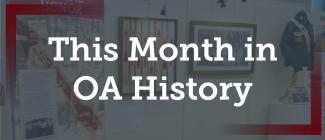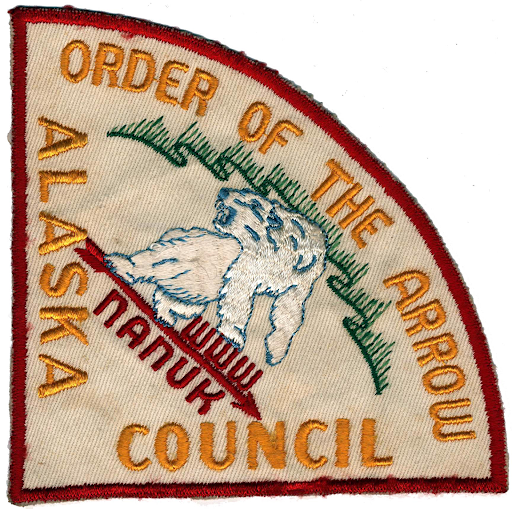
The term “Tribe” reverts to “Lodge” - March 1936
In a swift reversal in early March 1936, fourteen months after adopting the term "tribe," the Boy Scouts of America decided to relinquish it within the Order of the Arrow due to a conflict with the Lone Scout program's use of the same term. National Lodge Chief Thomas Cairns expressed the collective sentiment, stating, "Many of us seem happy to have again the use of the word 'lodge,'" marking a return to familiar terminology within the Order of the Arrow. Following extensive discussions, the decision was made to reinstate the traditional term "lodge" in place of “tribe.” Notable transformations unfolded as the Unami Tribe reverted to Unami Lodge on the local level and similar changes cascaded throughout the organization at the national level, with the National Tribe being restored to its original designation as the National Lodge.
Nanuk Lodge is Chartered - March 20, 1947

During the inaugural three decades of the Order of the Arrow, all chartered lodges hailed from BSA councils within the United States. A historic shift occurred on March 20, 1947, when Nanuk Lodge emerged as the first lodge located outside the confines of a U.S. state. Affiliated with the Alaska Council, Nanuk Lodge pioneered the expansion into U.S. Territories and used the polar bear as their lodge totem. The lodge served a solitary council that covered the vast expanse of the entire Territory of Alaska, a geographic area surpassing that of all other active lodges in the mainland combined. Over time, the Alaska Council underwent a transformative split into three distinct councils, underscoring the evolving landscape and reach of the Order beyond the continental boundaries of the United States.
The Ordeal Ceremony Handbook is Updated - March 1968
In March of 1968, the Order of the Arrow underwent a significant evolution with the publication of the revised Ordeal Ceremony booklet. The transformation included a redesigned cover, the elimination of the red ink color code, and the adoption of a new copyright. While the core Pre-Ordeal and Ordeal rituals and ceremonies remained unchanged, the booklet introduced valuable additions. A section on the "Conducting of the Election" and a "Suggested Election Ceremony" provided a comprehensive guide for the electoral process. Notably, the update also embraced a forward-looking approach with the inclusion of a section on "Training Ceremonial Teams," emphasizing the importance of skill development for those entrusted with conducting these sacred ceremonies.
The Passing of E. Urner Goodman - March 13, 1980

While visiting his children in New Jersey, a seemingly simple cold transformed into relentless pneumonia. Despite the option for specialized care at Lenox Hill Hospital in Manhattan, Goodman chose the path of intensive care. On March 13, 1980, the Scouting community mourned the departure of a visionary leader. Goodman's passing left an indelible void, but even in his final moments, his meticulous nature prevailed as he orchestrated his funeral. His service was held at Penney Farms on March 29 and was programmed with lots of music; a fitting tribute to a man whose life had been intertwined with the melodic spirit of Scouting. National Chief Jeffrie A. Herrmann and National Executive Secretary William F. Downs stepped forward to eulogize the departed founder. Drawing inspiration from the sacred Order's ceremonies, Downs concluded with a poignant plea: "May the virtues which he represented glow brighter in our hearts and consciences." In those solemn words, the legacy of E. Urner Goodman echoed, transcending the temporal confines and illuminating the hearts of those who revered him.